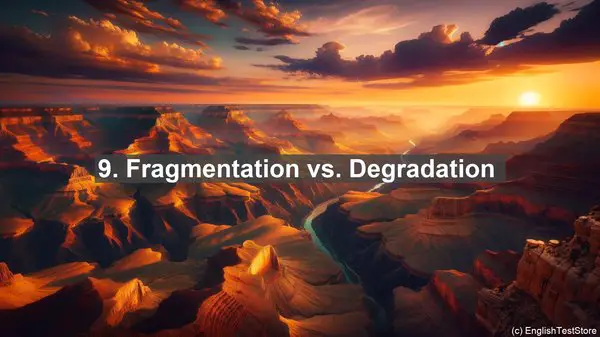Introduction
Today, we’re diving into the world of ecosystem management. As you explore this field, you’ll come across various terms that might seem similar but have distinct meanings. In this lesson, we’ll unravel the top 10 commonly confused words in ecosystem management, ensuring you have a solid grasp of their nuances. So, let’s get started!
1. Biodiversity vs. Species Richness
Biodiversity and species richness are often used interchangeably, but they have different connotations. Biodiversity encompasses the variety of life in an ecosystem, including genetic, species, and ecosystem diversity. On the other hand, species richness refers specifically to the number of different species in a given area. While high species richness indicates a diverse ecosystem, it doesn’t capture the entire spectrum of biodiversity. Understanding this distinction is crucial when assessing the ecological health of an area.
2. Habitat vs. Niche
Habitat and niche are terms frequently used when discussing an organism’s environment, but they refer to distinct aspects. A habitat is the physical location where an organism resides, encompassing the biotic and abiotic factors. In contrast, a niche is the role or position an organism has within its habitat, including its interactions with other species and its resource utilization. While a habitat can be shared by multiple species, each species has its unique niche, avoiding direct competition.
3. Renewable vs. Non-Renewable Resources
Renewable and non-renewable resources are integral to ecosystem management, and understanding their characteristics is vital. Renewable resources, such as solar and wind energy, can be replenished naturally over time. In contrast, non-renewable resources, like fossil fuels, are finite and take millions of years to form. The sustainable use of renewable resources is crucial for long-term ecosystem health, while non-renewable resources require careful management to avoid depletion.
4. Endemic vs. Exotic Species
When discussing species in a particular area, you’ll often come across the terms endemic and exotic. Endemic species are those found exclusively in a specific geographic region and are often vulnerable to environmental changes. Exotic species, also known as invasive species, are non-native to the area and can have detrimental effects on the local ecosystem. Recognizing the difference between these two is essential for conservation efforts and maintaining ecosystem balance.
5. Ecosystem vs. Community
Ecosystem and community are interconnected concepts, but they represent different levels of ecological organization. An ecosystem encompasses both the living (biotic) and non-living (abiotic) components of a specific area, including the interactions between them. On the other hand, a community refers specifically to the different populations of species coexisting in the same area. While an ecosystem is more comprehensive, a community focuses on the species dynamics within it.
6. Restoration vs. Rehabilitation
Restoration and rehabilitation are terms often used in the context of ecosystem management and conservation. Restoration involves returning an ecosystem to its original state, often after a disturbance, aiming for its full recovery. Rehabilitation, on the other hand, focuses on improving the condition of a degraded ecosystem, even if it can’t be fully restored. Both approaches are vital for preserving biodiversity and enhancing ecosystem services.
7. Keystone Species vs. Indicator Species
Keystone species and indicator species play crucial roles in ecosystem assessment, but their functions differ. A keystone species has a disproportionately large impact on its environment, influencing the structure and diversity of the ecosystem. Removing a keystone species can lead to significant changes in the ecosystem. Indicator species, on the other hand, serve as early warning signs of environmental changes. Their presence, absence, or behavior can indicate the overall health of an ecosystem.
8. Primary vs. Secondary Succession
Succession refers to the process of ecological change in an area over time. Primary succession occurs in a completely new or barren environment, such as a volcanic island. It starts with pioneer species, gradually leading to the establishment of a stable ecosystem. Secondary succession, on the other hand, occurs in an area that has been previously inhabited but experienced a disturbance, such as a forest fire. Understanding these successional processes is crucial for effective ecosystem management.

9. Fragmentation vs. Degradation
When discussing the alteration of habitats, fragmentation and degradation are two key terms. Fragmentation refers to the breaking up of large, continuous habitats into smaller, isolated patches. This can have negative effects on species movement and gene flow. Degradation, on the other hand, refers to the decline in the quality of a habitat, often due to human activities like pollution or overexploitation. Both fragmentation and degradation pose significant challenges to ecosystem conservation.
10. Resilience vs. Resistance
Resilience and resistance are terms used when assessing how ecosystems respond to disturbances. Resistance refers to an ecosystem’s ability to withstand a disturbance without significant changes. On the other hand, resilience is the capacity to recover and return to its original state after a disturbance. While some ecosystems may be highly resistant, others may have high resilience. Understanding these concepts aids in predicting and managing ecosystem responses to various stressors.

